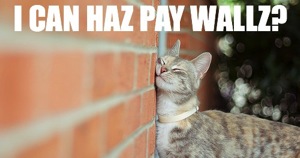 Yesterday’s meeting of top newspaper executives in Chicago, where they considered ways to charge for content online, has reignited the often-passionate discussion of whether news sites could generate subscription revenue from readers. Plenty has been written about the futility of erecting pay walls — much of which I agree with — but a few points are often overlooked. So here we go:
Yesterday’s meeting of top newspaper executives in Chicago, where they considered ways to charge for content online, has reignited the often-passionate discussion of whether news sites could generate subscription revenue from readers. Plenty has been written about the futility of erecting pay walls — much of which I agree with — but a few points are often overlooked. So here we go:
1. Newspaper companies that attempt a pay wall imperil their value. Sorry to put on my French cuffs here, but this is an important point: With so many local newspapers on the brink, it’s fair to assume they have only one more chance to find a revenue stream in online subscriptions. And until they make that last attempt, investors can all be hopeful about the prospects of charging for news online.
That hope is currently priced into the stock of Gannett Co., The New York Times Co., News Corp., McClatchy, and every other publicly traded company with hobbled newspapers on their hands. If they try and fail to erect a pay wall, their already-flimsy valuations could evaporate as investors decide there’s no hope for newspapers to find a new business model.
And keep in mind that many of these companies would still like to unload some properties on private investors who are more bullish about the newspaper business (the Sam Zells of 2009). That’s a lot harder to pull off if it’s plainly evident the papers won’t be able to wring any subscription revenue from their onine readers.
2. Pay walls aren’t necessarily intended to generate revenue. It’s counterintuitive, but charging for the website may be an effective way to protect the print edition, which still provides 80-90 percent of income at most newspaper companies. In fact, MediaNews Group’s president, Jody Lodovic, recently told Editor & Publisher that while the company plans to erect pay walls, it doesn’t expect a windfall from them. “The whole idea is to stop the erosion from print to online and encourage people to become print subscribers,” she said.
It’s obviously not a great longterm strategy. But when we consider whether pay walls will work, it’s important to realize that newspaper executives may have a different definition of success here.
3. “It’s not pay wall/no pay wall.” That’s a quote from Alan Murray, executive editor of The Wall Street Journal Online, whom I interviewed last month on this topic. Murray’s point is that an effective model — or, at least, the Journal’s model — for charging online pinpoints exactly what content readers are willing to pay for and leaves the rest free. And in that sense, “pay wall” is a total misnomer. Not a serious suggestion, but maybe we should call it a pay window?
Last month, Times Co. CEO Janet Robinson said this about pay walls: “Our goal is to add substantial new revenue from our users, without materially affecting our leading display advertising business.” To me, that means the Times is not planning to charge for much or any of the content it currently produces but will ask select readers to pay for extra services that don’t yet exist. That’s like pay molding.
4. Even if pay walls are the future of newspapers, they aren’t the future of news. Newspapers face a very specific financial situation that’s driving their choice to charge for content or not. These companies are giant ships with dim prospects for quickly turning around in this economic tempest, so naturally they will turn to stopgap measures. It would be a mistake to read much more into it than that.